by Edith Salminen
How hard can it be, I told myself. The thought of Nothing is impossible until it’s tried kept me going. Possibilities are endless and the sky isn’t the limit. Nevertheless, there I stood, scratching my head, clueless. Seeing my reflection in the window, I sure looked like someone in the know, someone creative. After all, I was in chef’s whites with the whole lab kitchen at my command. I had made this childhood favourite, extremely banal Finnish food, viili, because I wanted to give it new life. Now what? I wanted to prove to myself that just because things have always been done a certain way doesn’t mean they can’t be altered and adapted. But truth be told, when it came to this Finnish food that is so normal to me as to be completely banal, I faced a dead end. I felt I should just hang up my white jacket. As a Finn, I should be the most qualified to experiment with my own food traditions – yet instead I had a hard time tackling such a familiar food from a new angle.
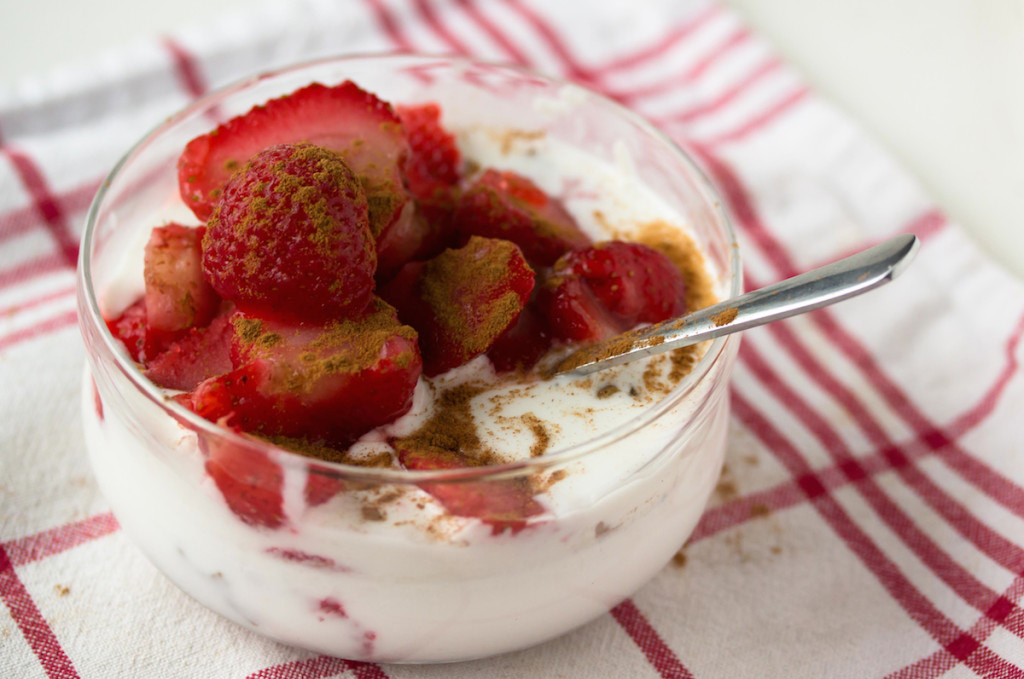
C-R-E-A-T-I-V-I-T-Y – ten innocent letters in the Roman alphabet. When placed after one another in the right order they form a delightful yet pressuring monster of a word. Big news: creativity doesn’t happen on command. Yet, when the pressure is on, miracles can and do happen. But the balance is delicate. In hopes of getting my mojo back I looked up the definition: “Having or showing an ability to make new things or think of new ideas”. New, new, new. Think new. The burden of novelty was eating me from the inside.
Not to be afraid of failure and to play like a child without set goals or defined objectives is the best medicine when in creative standstill. I decided to go for the good old exclusion strategy – reaching for the best solution by trying everything then excluding what doesn’t work. Every time someone at the Lab asked me whether I had tried this or that, I made sure to do so.
Can you make viili ice cream? Let’s see. What about a viili panna cotta? Exciting. Viili butter? The mould would probably add nice flavour. Viili foam? We might lose the ropiness but bring it on. Have you smoked it? Let’s do it. Try using it to cure or inoculate other foods? Why not. And so the list went on. I had the scent. I started to understand what to do and what not to do, gradually excluding options. Creativity was flourishing in an ever-expanding scope of possibilities.
Yet each new endeavour generated some degree of growing pains. This amused me. I can’t do that with viili. My culturally-constructed culinary grammar saw mistakes everywhere. But the child in me kept on playing, against the rules. Funnily enough, I never thought I was being conservative, or stuck in foodways determined by tradition and food-related ‘codes of conduct’. Usually I’m the first one to question commonly accepted ways of preparing classic dishes and handling classic food products. In countries like France and Italy where traditions and family recipes have the toughest roots to pull up and interrogate, I enjoy provoking people by asking why they never try to do grandma’s recipe differently. The default comeback “Because it’s perfect like this” never satisfies me, even though I sometimes end up agreeing. It was time to take my own medicine.
All my new viili applications pleased me, and it was fun to see some of the Lab crew-members find their personal favourites. I was excited again. The viili ice cream was fresh and acidic. I simply poured viili is a PACO jet tube, added some organic sugar, froze it and spun it down. It was more of a granité than an ice cream, but worked nicely on the side of a sweet piece of pie. The panna cotta idea made a lot of sense in principle, but the outcome wasn’t much to celebrate over. I tried both with and without gelatine, added and no added cream, and it was good, but not great. I didn’t manage to both get the thing out of its mould and keep the slimy ropiness. The butter was a favourite. I inoculated cream with viili and let it ferment 24h. Then I simply whisked it like one would when making butter. The mould as I expected added some depth and character to the flavour – a light mushroomy, foresty aroma. Since I have been making this Finnish squeaky cheese called leipäjuusto (an oven-baked, fresh raw cow milk cheese) I thought I could make a Finnish white mould cheese. Sounded easy enough. All I did was to make my cheese and smear it with viili and wait. The texture of the cheese broke down and softened a bit. It tasted like a cheap bloc of Brie. Not bad but definitely would need more work. Then there was the curing – it wasn’t my idea, but Roberto’s. He wanted to cure fish with viili, thinking something in line with surströmming. We jarred some raw cod with viili and sealed it up. A few weeks later, he approached me with the jar. “Would you volunteer to taste?”. Of course. It smelled very fishy but tasted quiet nice. Fishy but fresh. The slime from the viili together with the fishy aroma was a bit challenging I must say. But I swallowed it with no problems. But the foam was the absolute winner (at least that’s what Josh, Alicynn and I thought). Combine 1 part cream and 2 parts viili, and whisk on. The exopolysaccharides ensured the foam whipped up nicely and retained its texture, the ropiness transformed into an ethereal but stable substance through the simple introduction of air. Either sweet or savoury it tasted lovely: light and fresh, acidic and clean.
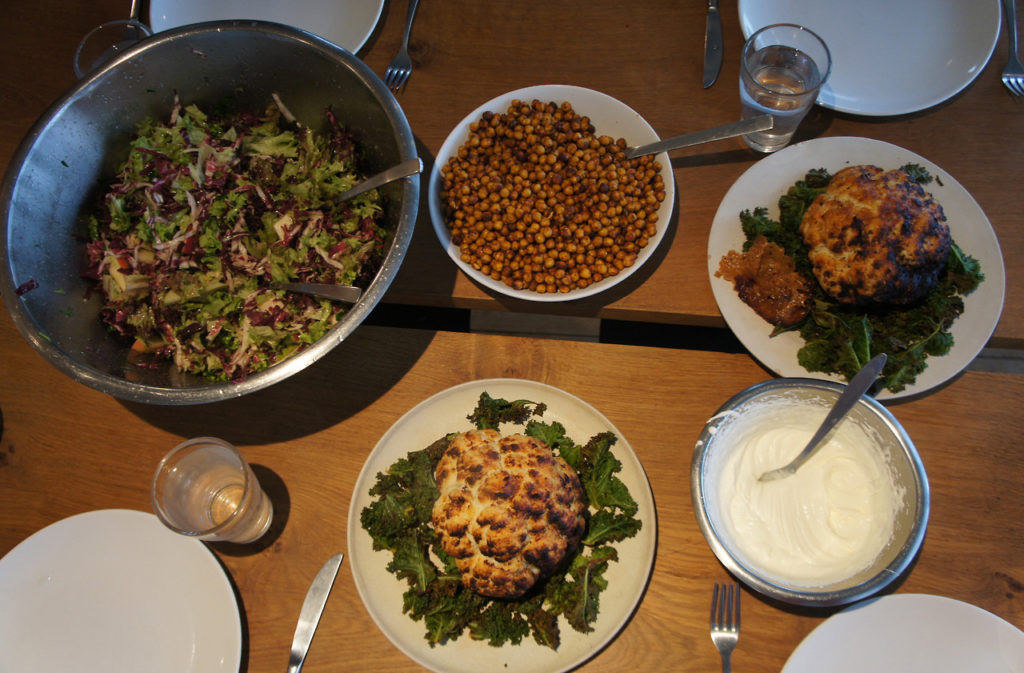
By this time Josh had become the number-one viili fan and encouraged me to share some of my viili work at noma’s Saturday Night Projects – a weekly gathering after Saturday night service introduced by René to encourage the team at the restaurant to present each other with new, creative and though-provoking ‘projects’: a technique, a flavour combination, an ingredient, or a full-blown dish. Some chefs work on their respective projects for weeks, some for days; some simply end up pulling it together at the drop of the hat. The modest and shy Finn in me wasn’t convinced. Josh however remained affirmative. It was set. I was shitting my pants. Luckily though, we are a team here at the Lab and people are happy to help out a friend any time. Roberto – a talented chef with great gusto from Sardinia who had showed great interest in viili – would be my partner in crime. A great opportunity was ahead of us. To have the noma team taste and critique a flavour and texture I had spent so much time and energy on would be the best reward.
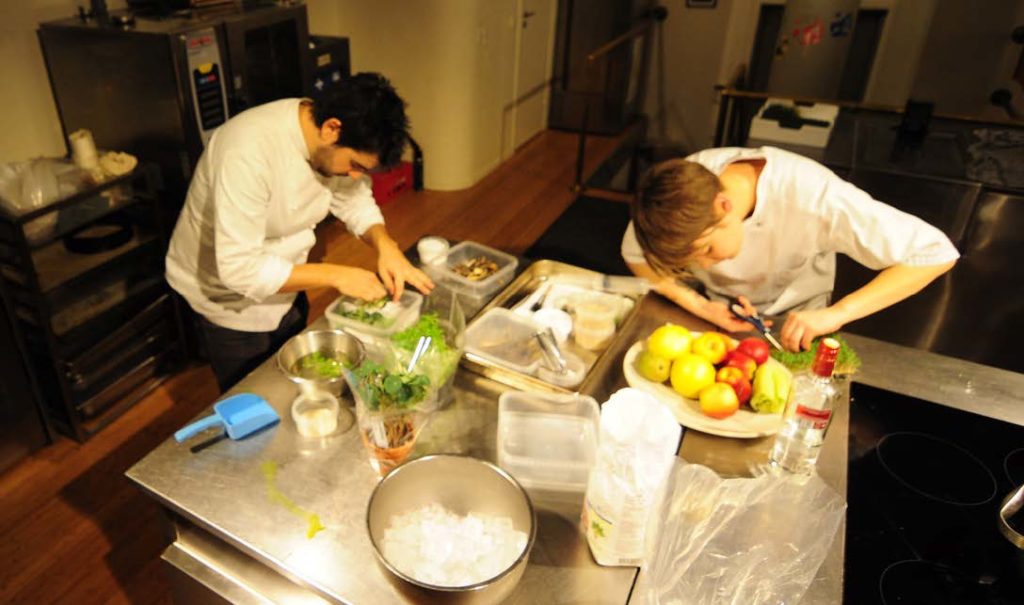
Together with Roberto, we wanted to tell the story of viili on a plate. There had to be sauna and spring present in the final dish – two very important parts of the Finnish cultural identity. It also seemed ideal to find ways to combine our two very different food cultures, or at least put them in dialogue: we needed our dish to be delicate and subtle, yet expressive and effusive. After a few days of twisting and turning, tasting and savouring, we ended up choosing elements and techniques that would pay homage to both Roberto’s Sardinian heritage and my Finnish roots.
Ironically, after all the experimenting, we chose to keep the protagonist – viili – in its expressive, unadulterated form. Whether it was the newly-found conservative in me or Roberto’s respect for tradition that led to that, I don’t know. Probably a combination. What I do know is that viili is fundamentally Finnish: simple, modest and pure. Sometimes an ingredient just won’t get any better by applying advance cooking techniques to it. I knew this in principle, but it is a lot different to come face to face with this realisation with a product you know and love, and is duly humbling.
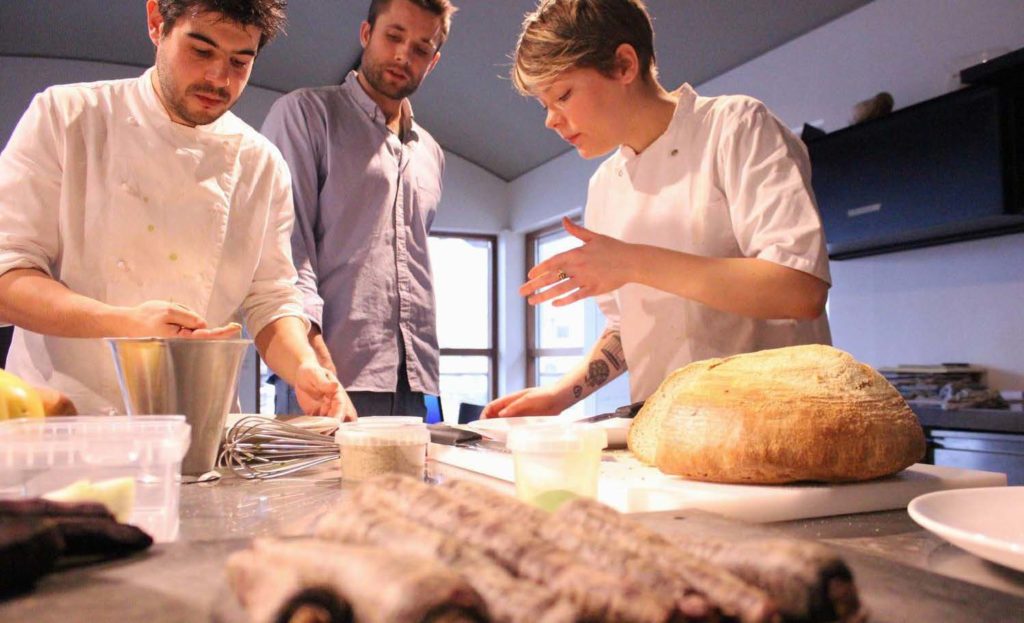
We chose to accompany it with a personal favourite of mine, the parsnip. Roberto had a brilliant idea to cook the humble root vegetable in ash – an ancient technique much used in Sardinia, “old school sous-vide” as he calls it. We would only use the peel though, dehydrate it into a crispy, sweet chip. The juicy inside would be incorporated elsewhere. The parsnip skin looked exactly like tree bark. Ashes and bark. Sauna. Bingo! Baby nasturtium leaves rising from an icy nasturtium granité would speak to rebirth and spring – another great idea by chef Roberto. I felt the dish just wouldn’t be complete without some salmiakki (Finnish salty liquorice) which marries incredibly well with parsnips. Salmiakki has variants across the Nordic region, though the common principle is liquorice flavoured with ammonium chloride. We wanted the liquid salmiakki to look like the thickest, deepest traditional balsamic vinegar. A few shiny drops of it on the parsnip bark made it resemble sap, yet another sauna allusion.
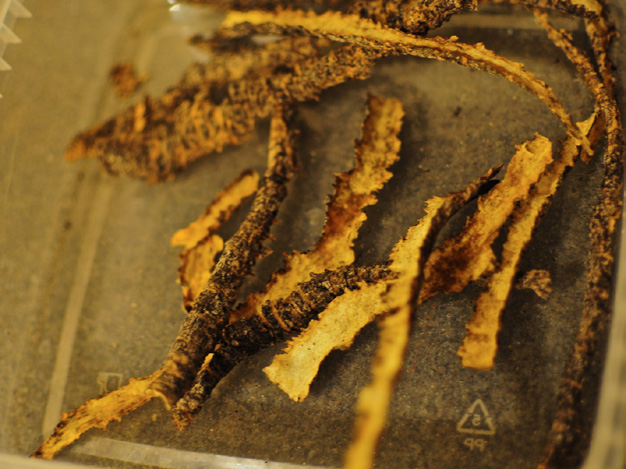
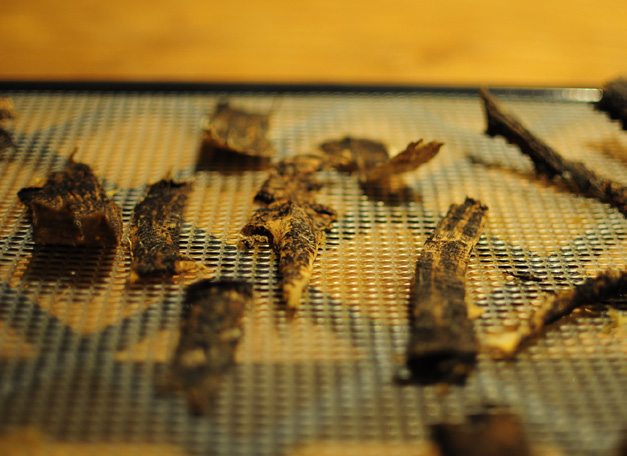
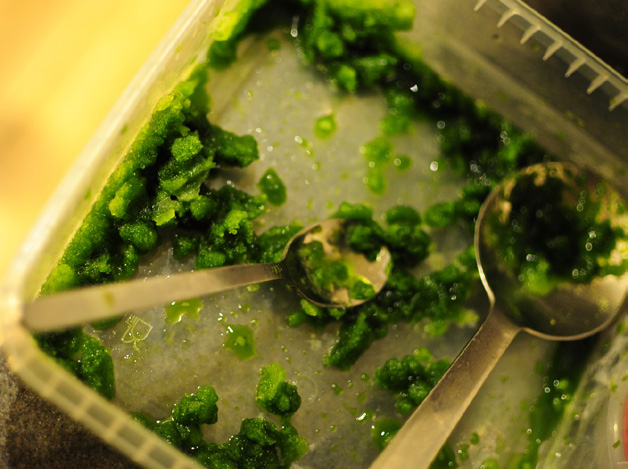
After selecting the right plate for our creation, we needed to make it look as beautiful as it tasted. Trials and errors. Splashing, drizzling, dripping, painting, gently placing tiny leaves with a millimetre focus. Intense, all right. For Roberto this is his job, he handled it like a pro and had nerves of steel. For me, each step along the way was a revelation of flavour combinations that viili either enhanced or became enhanced by. And yes, it was also extremely nerve-wracking, for me at least. It made me relentlessly emotional. Roberto made fun of me, but in the most loving way. He understood my exaggerated emotional reactions – he’s Sardinian and Italian, after all.
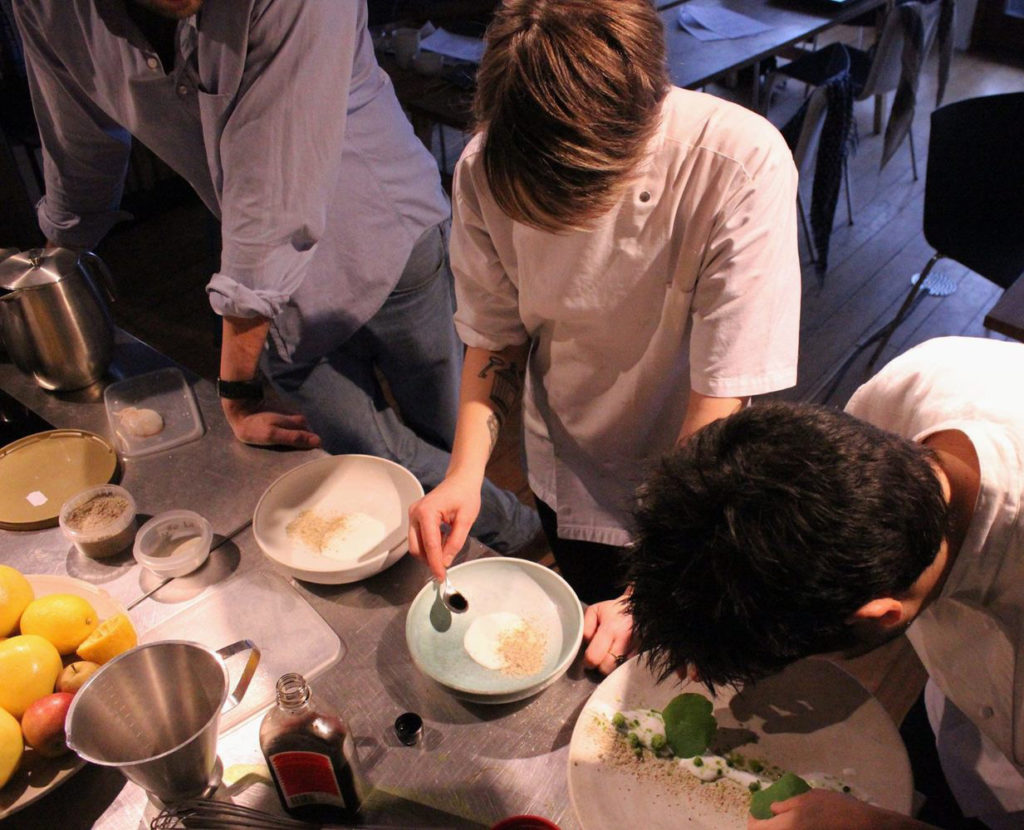
On D-day, ten minutes before we were to enter the culinary dragons’ den, I felt confident. We were ready, we had been working hard. Still, I needed a good luck charm. Fast, Edith, think. A week earlier I had been curious and ordered a viili seed all the way from the States. It arrived dehydrated, complete with an adoption certificate.
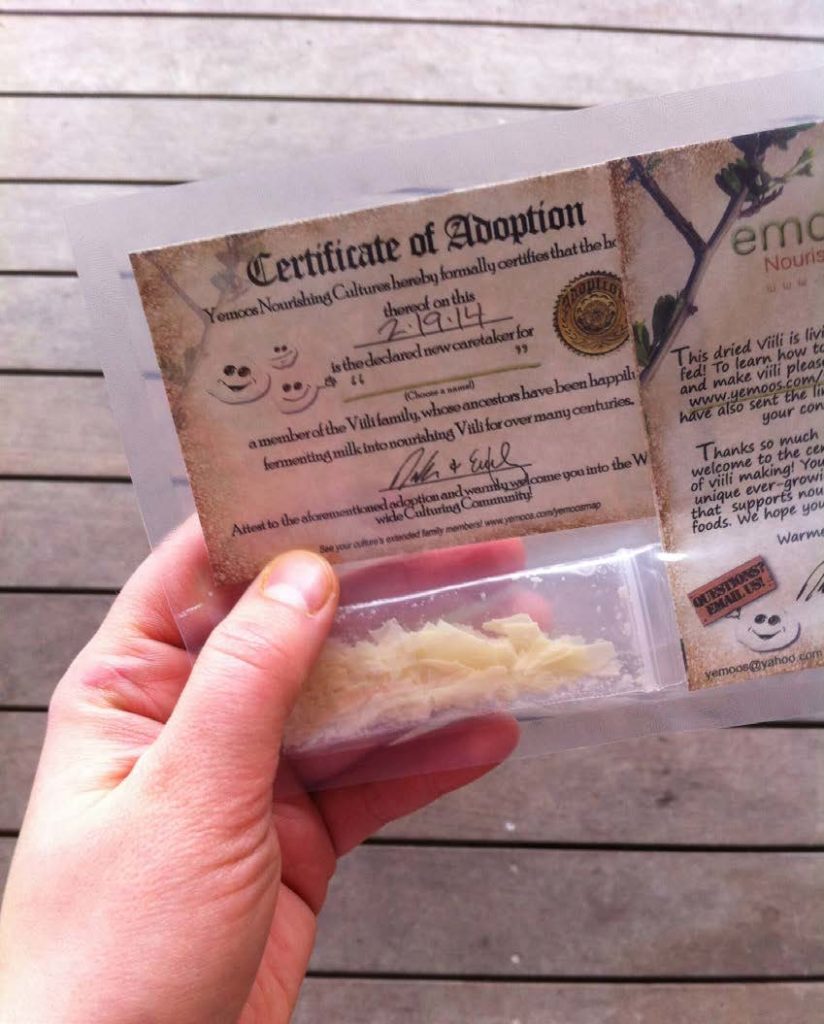
That would work perfectly. I placed the tiny plastic bag in my pocket. “Showtime buddy,” I whispered to my new Finnish-American friend. With the support of all the crew members, we stepped off the boat, onto land and entered the restaurant.
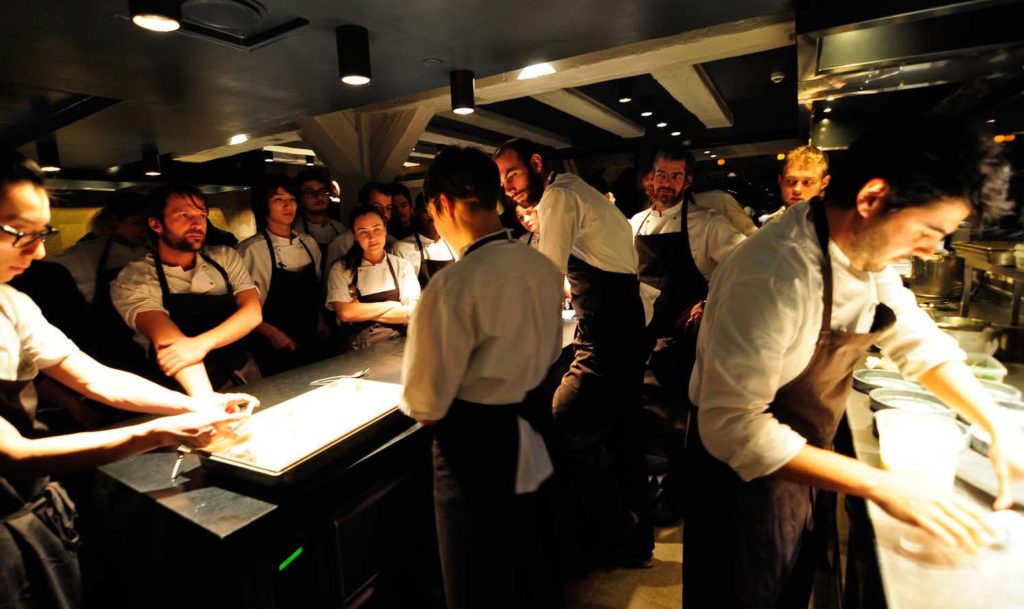
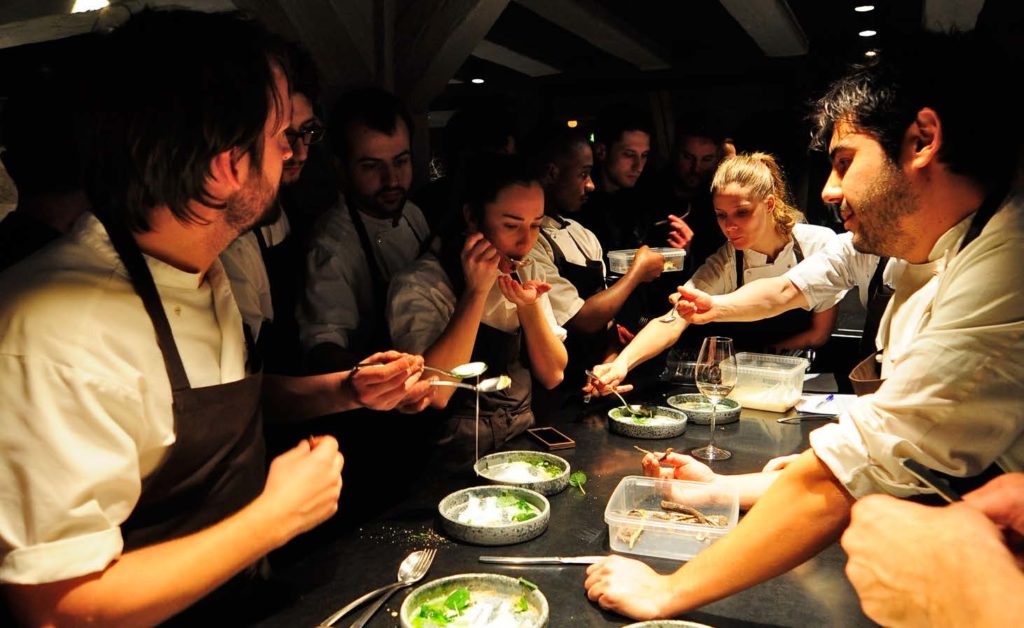
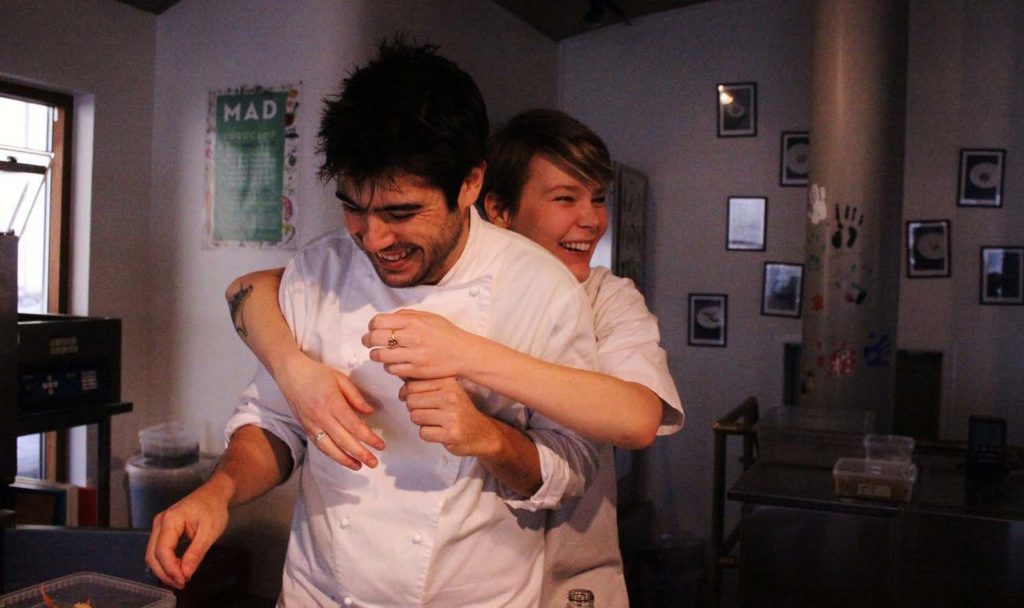
Best viili duo.
We continued working together like a true dream team. I did most of the talking, the academic mumbling of a presentation, introducing all the curious chefs to the slimy mouldy Finn. Roberto was right beside me making sure our dish would be spot on and delicious. Like clockwork, when I wrapped up my introduction, Roberto served the dishes to the hungry and curious cooks. Tasting, laughter, confusion, below-the-belt jokes. We were ready for the toughest of questions. Final pH? Heat resistance? Why? How? When? We kept assessing the questions until both minds and taste buds were satisfied.
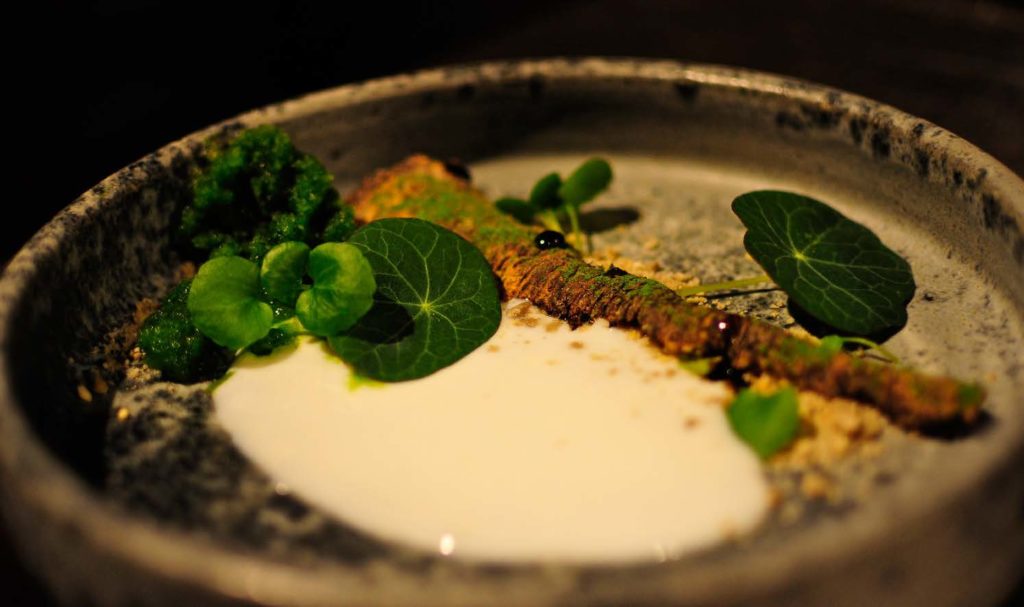
There were many interesting thoughts that arose in the discussion. Roberto and I had designed our viili dish as a refreshing and appetite-stimulating starter. Of course there was certain sweetness to the dish as a whole, mostly derived from the dehydrated parsnip. Nevertheless we sensed that viili would work perfectly as a palate-cleanser to begin a long tasting menu, a bit like wiping your hands with a hot or cold wet towel before eating. The green, subtly spicy and slightly sweetened nasturtium granité would support viili in this. René & Co. had another vision though: dessert.
I guess this made sense, especially from the noma-perspective. The aversion to synthetic sweetness in the New Nordic cuisine is a known fact. But for Roberto the dish wasn’t sweet. For me, regarding viili as dessert seemed odd (no surprise there), but in this setting and with this dish I could understand it. What really flirted with my nerdy academic mind was the debate on the degree of sweetness of not the viili, but the granité. I have always regarded the perception of sweetness as extremely socio-culturally modulated, and therefore it was a fascinating topic of discussion that revealed a lot about the differences in taste perception between southern and northern Europe emerging from their different landscapes. When fruit ripens in the Nordic region, it can get sweet but it usually retains quite a bit of acidity, like its many apples and berries. Sources of saccharine ripeness are rare, which translates into a palate here that tends to be pretty sensitive to sweetness – though this does not mean that you can’t find some really sweet things here, like classic Danish baked goods drømmekage and brunsviger. But in southern Europe, plants get lots of sun for a long growing season, and much more sugar tends to develop in fruits. Could this be part of the reason why René tasted the dish sweeter than Roberto? Or is it simply individual preference uncorrelated with geography?
Head of pastry, Rosio, was even asked to come forward with the big guns, the refractometer used to measure dissolved solids (and thus sugar) in aqueous solutions like, for example, wine. One degree Brix translates to 1 gram of sucrose in 100 grams of solution and represents the strength of the solution as percentage by weight (% w/w). Roberto was baffled by all this, and so was I – Roberto because he didn’t think it was sweet at all, and me because of all the technical precision. “It must be at least 23,” the chefs mused. It turned out to be 9°Bx! “The device must be broken,” they said. They couldn’t believe it.
But that didn’t stop anyone from enjoying the dish, wherever in a meal in might come. “As a dessert, who fucking loves this?!” René said, raising his hand as he looked around at his brown-aproned team. It was a room of hands in the air. The verdict was in.
Breaking habitual patterns is among the toughest things for human beings to accomplish. My slimy childhood friend had confronted me in very concrete terms with the paradox of being omnivorous: we like and seek comfort in the familiar, yet we simultaneously yearn for the new. I ended up presenting viili as viili, my old friend. But the way we combined it with other flavours and techniques fed my inner raging neophile. There are different types of experimenting – trying to turn viili into something it’s not didn’t really work, but developing a dish with it revealed other aspects to its character that I didn’t know before. Sometimes you need to try it all to realise that the most obvious and simple solution works best. The difference is that now I know why it does, and how to go from there. And I think, in the end, I managed to do my slimy friend and my culture’s culinary traditions proud.
Sauna & Spring
for one dish
Viili
15ml, serve cold (from a 4˚C fridge)
Parsnip bark
1 parsnip, burned with blowtorch, cooked under ash of a fire for 50 minutes, then peeled and skin dehydrated at 50˚C overnight until crisp.
Sunflower seed crumble
Sunflower seeds, toasted in pan, blended together in thermomix.
Salt to season.
Nasturtium granité
25g nasturtium leaves and stalks
500g water
35g white sugar
2 ice cubes
All blended in thermomix 1 minute maximum. Filtered through fine mesh net. Put in blast freezer in shallow gastro. Scrape the ice down every three minutes.
It is important to create sufficiently small ice crystals. The more sugar, the smaller the crystals will freeze, but this can also be achieved through more frequent and faster scraping. Best prepared about 50 minutes before plating the dish – when made hold in bowl on a larger bowl of ice until ready to plate.
Spinach powder
Spinach, dehydrated at 50˚c until dry, then powdered by hand. Filtered through fine mesh net.
Salmiakki reduction
10ml salmiakki (salty liquorice liquid) : 1ml apple cider vinegar
Reduced to the consistency of aged balsamic vinegar.
Nasturtium leaves
Small, to garnish
Plating
Make sure to pre-chill your plate. Be creative!
Big thanks/grazie mille to my partner in crime, Roberto!
